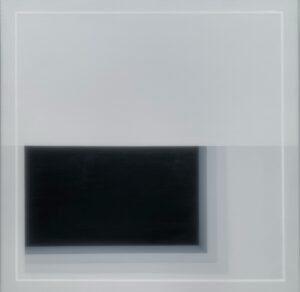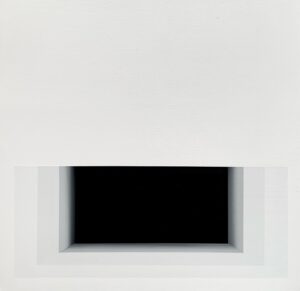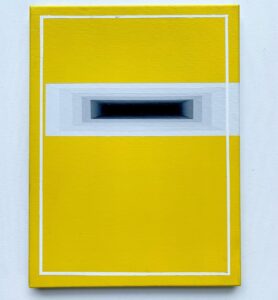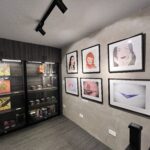
The Art of Lester Amacio, a Traversal into the Inner Self
The art of Lester Amacio is like a window through which we peer into the heart and soul of ourselves and each other, offering a glimpse of the intangible emotions, thoughts, desires, and instincts that lie beneath the surface of our everyday lives.
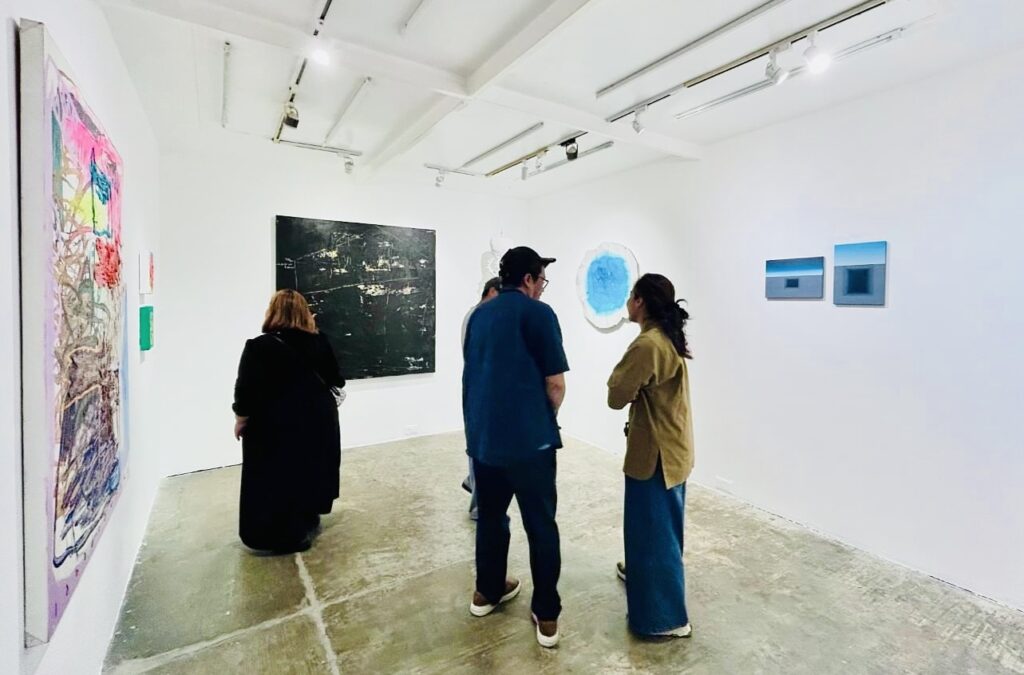
Bringing these narrative threads into public dialogue are Amacio’s works that are showcased in two notable group exhibitions in Manila this November.
First, it is titled Silent Conversations at Vinyl on Vinyl Gallery in Makati City alongside the works of Alychon, Dedy Sufriadi, labadiou Piko, Marius Dideles, Therese Nicole Reyes, and Dessa Mendoza Reyes. Second is a poetically described exhibition titled Sitting quietly, doing nothing, spring comes, and the grass grows by itself at Nami Art Gallery at Greenhills Mall, San Juan City, where his work shared the space with abstract artists Arvin Narvaez, Mercedez Paez Layog, Ricky Francisco, and fellow Ilonggo artist Roland Llarena.
The masterpieces of Lester Amacio in these exhibitions echoes his body of works in the last half of a decade, a shift from surreal gothic into an amalgamated abstract art, a seamless blending of abstract expressionism, geometric abstraction, and abstract illusionism, showing a rare proficiency of an artist who has a combined command on painting as a Fine Arts graduate and on photography with a robust experience as a photo journalist. These characteristics are demonstrated by the minimalist technique of his works with clean lines that emphasize simple geometric shapes, neat flat surfaces, monochromatic finishes, patterned and tactile textures, and the absence of unnecessary details.
Silent Conversations
The show Silent Conversations explores the language of the unsaid, the spaces between words, and the silent dialogues within the canvasses.
The collection “centers on themes of boundaries, transitions, and the liminal spaces where meaning is both discovered and concealed. Capturing moments of tension and intimacy, the pauses and glances that convey as much as spoken words.” It intends to highlight “the subtleties of expression and encourages a deeper reflection on how we communicate in the in-between—where silence speaks and the unsaid becomes profound.”
Amacio’s works titled Daylight and Often I Pretend touched the intentions of Silent Conversations, and it evokes a journey inward—a subject exploration of the self that is both personal and universal. The synergy of elements—form, color, and optical illusion—depicts his mastery of abstract painting, containing the messages and meanings it aspires to convey to a viewer within the 10 x 14/14 x 10-inch canvas.
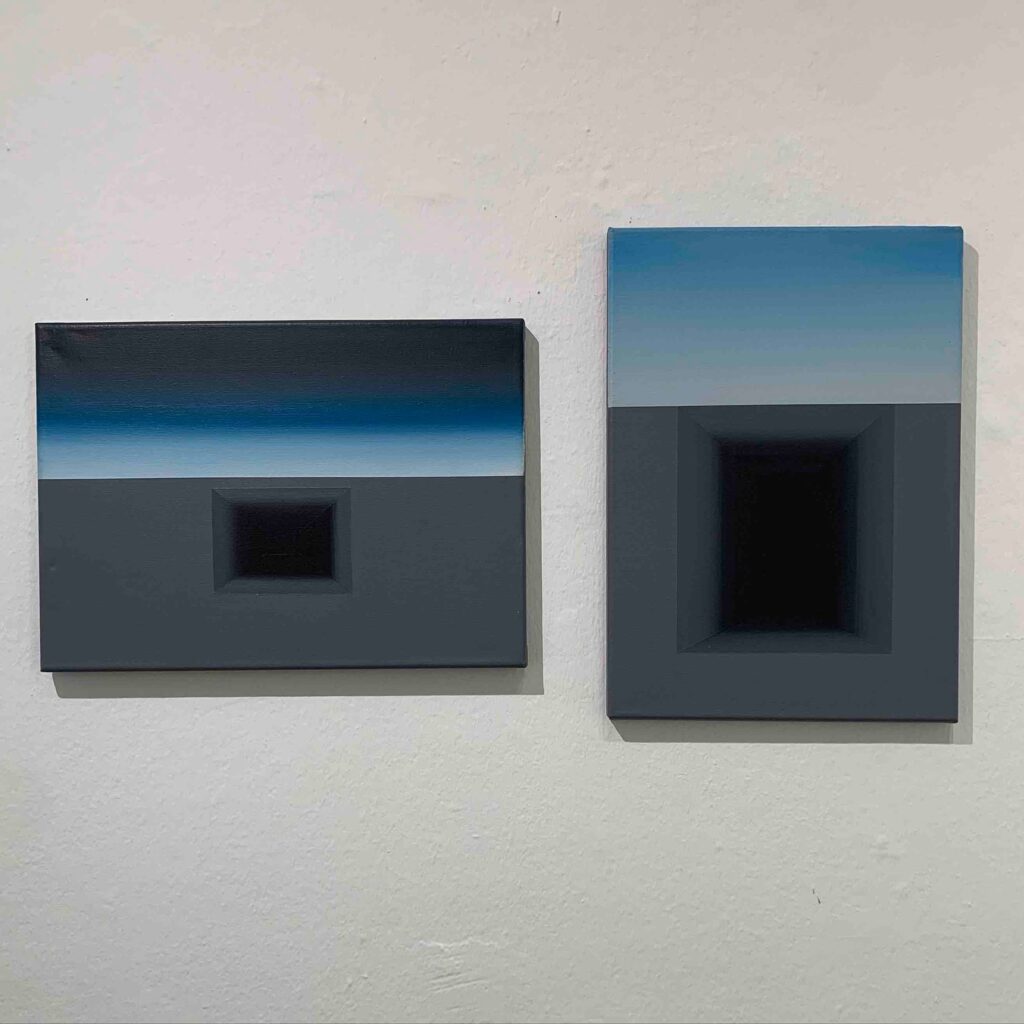
Amacio’s command of the color field method is particularly noteworthy, using the didactic approach of optical illusion as a visual language to convey hope through an expansive horizon of a daybreak sky, probably hinting at the artist’s waking hour as a period of deep introspection, and demonstrating meanings by rendering centrality of focus by employing gestural marking or rule of thirds to play symbols of light versus darkness and express feelings of desperation and hope and ideas of chaos and order.
His execution of optical effects heightens the sense of psychological depth, guiding the viewer through a visual metaphor of traversing the inner self, represented by the diminishing geometrical shapes and colors, particularly squares and rectangles, with dominant gray eventually fading into hues of black to convey a mental state of going into the mysterious abyss in an attempt to get into the bottom of human emotions.
Daylight and Often I Pretend serves as a mirror reflecting the artist’s personal journey—every so often quiet, occasionally loud, yet invariably deeply felt, an encounter not merely for observation, but to engage in a conversation, an exchange that resonates with the deepest parts of our being.
The beauty of Amacio’s art in Silent Conversations lies in its ability to reveal what words cannot express and to make visible the unseen realms of our psyche, and by bringing into the surface the hidden layers of our soul, the raw emotions, the dreams, the fears, and the desires that define us as individuals.
Sitting quietly, doing nothing, spring comes, and the grass grows by itself.
The ubiquitous geometrical trait of his art is shown in his other masterpieces, both old and new, like the one that he donated to the University of the Philippines Visayas Museum of Art and Cultural Heritage (UPV-MACH) in November 2023, entitled Absence of the Sun (acrylic on canvas, 3 x 4 feet, 2022), which performed as a prelude to a series of paintings that deliberate on human behavior, emotions, and moods.
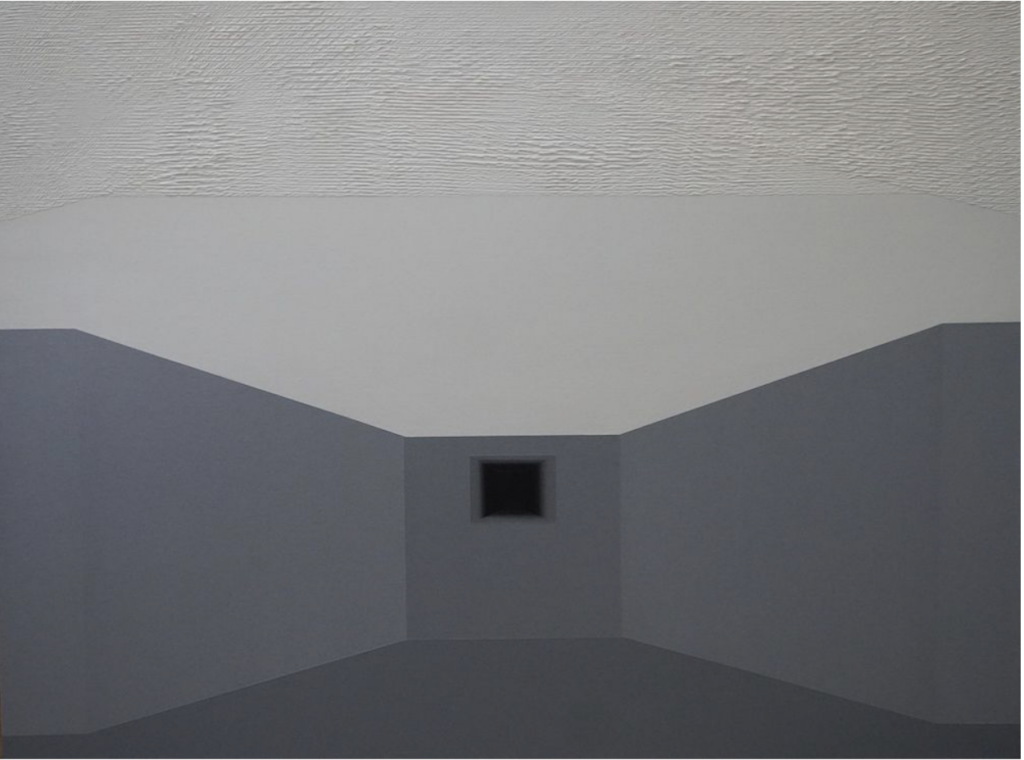
Absence of the Sun reflects a poignant moment of emotional detainment, capturing the artist’s struggle with loneliness and isolation. The work suggests a self-reflective exploration of the sun’s role in shaping human mental and emotional well-being, probing how its absence may impact one’s sense of connection and inner equilibrium.
Undeniably, sunlight plays a crucial role in regulating the human circadian rhythm—the body’s internal clock that governs sleep-wake cycles and influences energy levels, as well as physical, mental, and behavioral changes. A lack of natural light, particularly in the morning, disrupts this rhythm, leading to sleep disturbances, fatigue, and a general sense of disorientation. Furthermore, Absence of the Sun highlights the issue of social isolation, emphasizing how the absence of social interaction can intensify feelings of loneliness, erode emotional well-being, and contribute to mental health disorders such as depression.
Contemplating these feelings led to the creation of the How is the Weather Inside You? series, two of which are featured in the exhibition, Sitting quietly, doing nothing, spring comes, and the grass grows by itself.
The work of Lester Amacio, How is the weather inside you? 1 and 2
(Acrylic on Belgian Linen, 24 x 24 inches, 2024) at Nami Art Gallery.
Through these pieces, Amacio delves deeper into the theme of human emotions and mental states, exploring their neutrality, ambiguity, ambivalence, and fluidity on the canvas. He uses a palette of white, gray, and black to symbolize seasonality and the shifting of weather, reflecting his perspective that the human mind, like the sky, is constantly moving through cycles of clarity and cloudiness, calm and turbulence.
The growing focus on mental and emotional health in contemporary discussions inspired the artist to delve deeper into this topic through a thought-provoking series of How is the Weather Inside You? In this body of work, the artist experiments with shapes, colors, and textures on canvas, using rectangular blocks as a central motif. The cool, warm, and monochromatic hues that animate the compositions serve as a visual representation of the fluctuations in our mental and emotional states. These carefully chosen colors evoke the shifting dynamics of psychological well-being, illustrating the interplay between positive and negative states. Through this exploration, the artist captures the complexities of mental health, highlighting how our internal “weather” profoundly impacts our daily lives, moods, and overall dispositions.
See the Art of Lester Amacio titled All The Light We Cannot See at the Adoro Gallery Museum
The art of Lester Amacio transcends mere visual representation, becoming a sacred space where the heart and soul are not only understood but deeply celebrated.
His works not only solidify his reputation among those who study the complexities of contemporary abstract art, but also affirm his place as a significant figure in the ongoing dialogue between perception, emotion, and the canvas. Through his powerful exploration of inner landscapes, Amacio challenges the viewer to engage with the emotional depth of the human experience, making his art an essential contribution to the evolving conversation on the intersection of the mind, the spirit, and artistic expression.
Artist’s studies showing variations of How is the weather inside you?
About Lester Amacio
Lester Amacio is an artist and curator from La Paz, Iloilo City, Philippines. He studied painting at the University of San Agustin and completed photography at West Visayas State University. He has worked as a gallery assistant at the Etemad Gallery and Leila Heller Gallery in Dubai, United Arab Emirates.
Amacio’s works have been exhibited at the National Museum in the Philippines, Metropolitan Museum of Manila, Yuchengco Museum, Cagayan De Oro Museum, Negros Museum, and in galleries and museums in his home city like Museo Iloilo, Adoro Gallery Museum, Iloilo Museum of Contemporary Art, and the UP Visayas Museum of Art and Cultural Heritage, among others.
In addition, his works were also shown internationally in the UAE, where he worked, Singapore, and Italy, among other countries.
Amacio was a semi-finalist in the Metrobank Art and Design Excellence (MADE) in 2005 and 2006. He also won the Juror’s Choice in the Philippine Art Awards at the Visayas Regional Level in 2011, making him a finalist at the national level of the same competition in 2012.
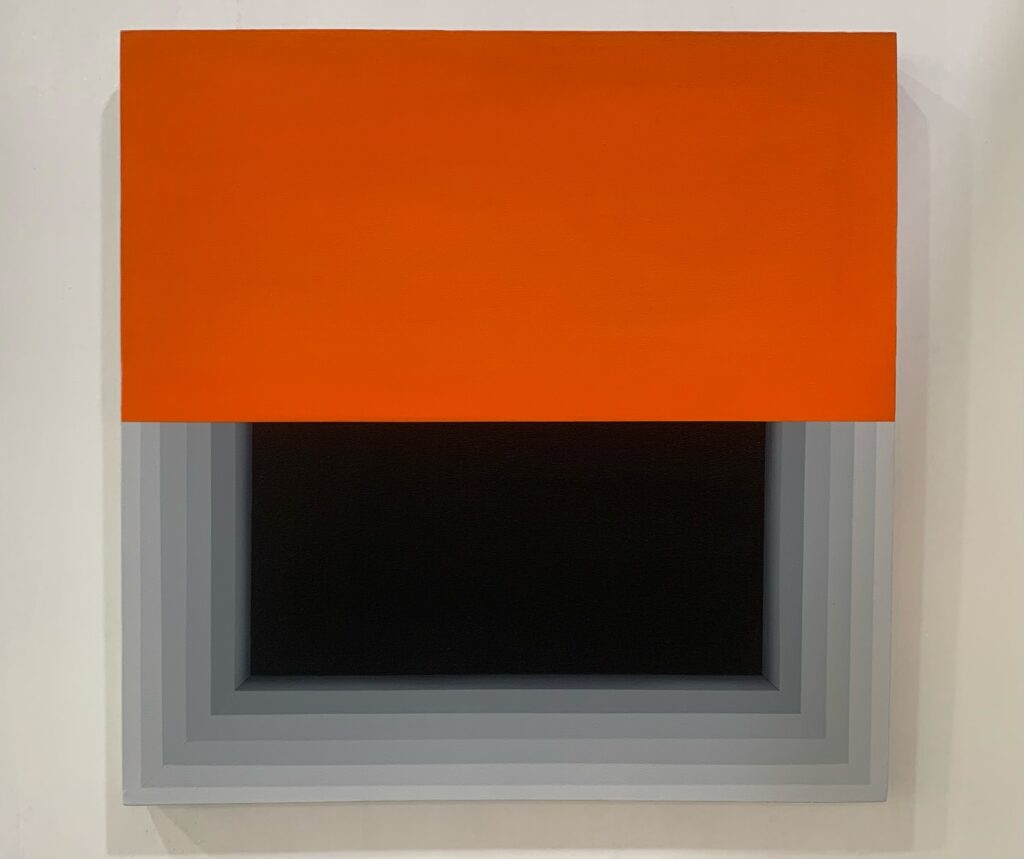
Credits:
Featured photo from the Facebook page of Nami Art Gallery.

